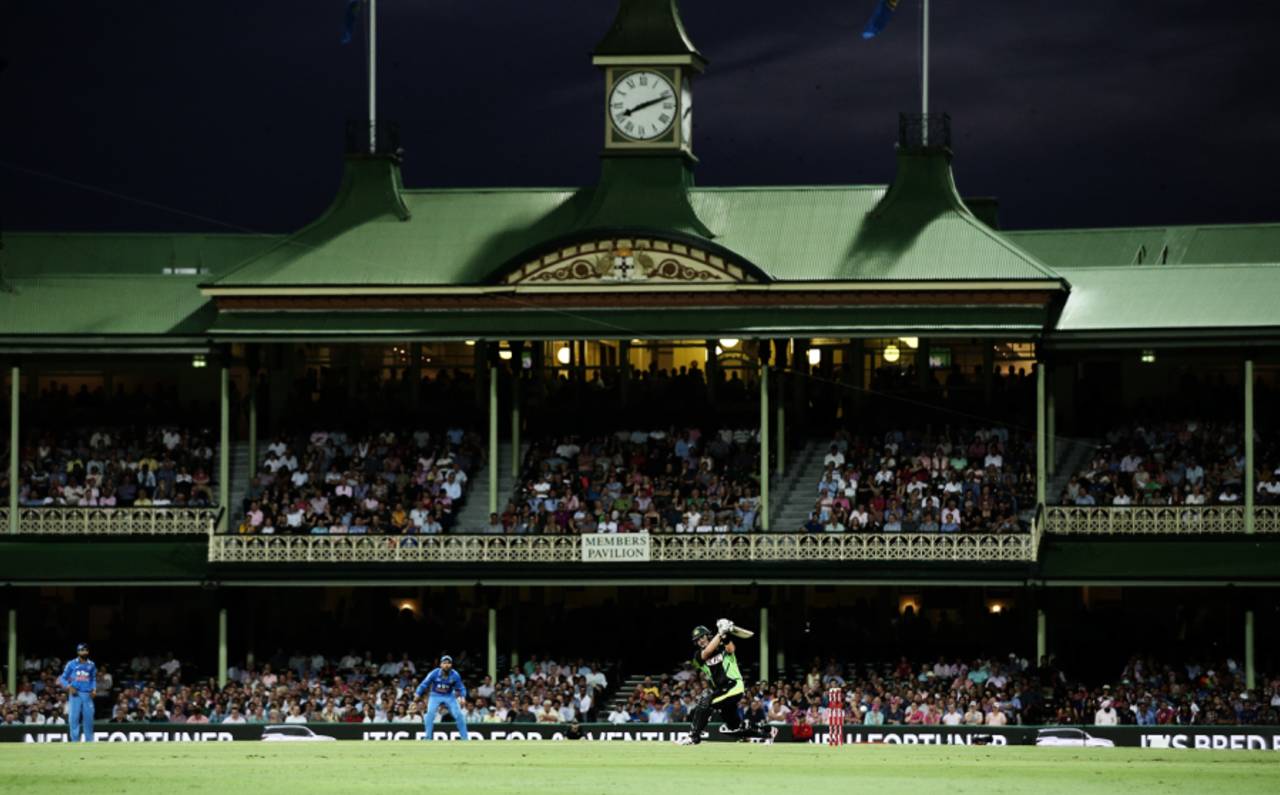There are environments where the leaders talk about how big this game is, how important this game is, and say, "If we lose this game we are out." I have been in plenty of these team environments. There are also environments where leaders talk about how performance in this game will dictate selection, and that underperformance might lead to players getting dropped. I have heard from leaders of a number of teams that I have played in say things like, "Spots are up for grabs in the game" or "If you don't perform, you will get dropped."
So guess what people are thinking in those environments? "Don't lose. I really need to perform today. I need to score runs. We need to win. Don't get out. Don't bowl badly. Don't stuff up, otherwise I might be gone." All of these focus on results and fear of failure.
These environments can work for a shorter period of time, where fear of failure can drive individuals to be ready to lock in for one very important game. But these environments are not sustainable at all as stress and anxiety builds up to a point where the whole team implodes and I have been a part of these environments on a few occasions too. The telltale signs are that everyone starts to only play for themselves, for their individual spots, and as long as they do enough to get picked for the next game, they are happy. This always leads to an incredibly toxic team environment where the enjoyment factor of playing the game that you love evaporates and it turns into every person for themselves. We should be doing all that we can to do the opposite of this, as the best and most successful team environments always have a fun and enjoyment aspect to them as a very important undercurrent to all that they do.
Other environments I have been a part of are ones where there is a clear focus on the process and leaders ask the players to just bring the best version of themselves every time and to do it over and over again. They reiterate that if we all do this, we give ourselves the best chance of coming out on top. This is exactly what a championship mindset looks like!
This is what made Ricky Ponting such a good captain. He always said to the team in the lead-up to big games that the team whose individuals do the basics better and for longer will be the team that will come out on top. It focused our minds on the process, on doing the basics, controlling the A factors.
Paddy Upton for Rajasthan Royals built a process-driven environment that took all of the anxiety and stress out of a very pressurised tournament where performance and results were so important. The other team environment where this was done incredibly well was at Chennai Super Kings in the IPL under captain MS Dhoni and coach Stephen Fleming. I never heard either of them say, "We need to win this game today", or "If you don't score runs today or take wickets, you will be getting dropped."
My second year with CSK really stuck with me. There was no chopping and changing in selection. In other teams I had been with, players were turned over constantly. If a player didn't perform for a couple of games, selectors would think he wasn't good enough and would replace him immediately. This meant that everyone started looking over their shoulders and thinking, "Gosh, if I don't perform in a couple of games, then I could be gone too."
No matter who we are, we are always going to have times in our lives where we are in a "results-focused" environment. By understanding the mental-skills framework in this book, we know that this is the opposite of where we want to be mentally for us to be at our best both individually and collectively. We need to listen to what is being said by the leaders in this environment and we need to redirect their words ourselves to say, "I am not going to let their results focus influence the correct mindset I need for me to be at my best." This can be much easier said than done when players are being chopped and changed from one game to the next without any rhyme or reason, apart from someone not performing in one game. But understanding this will be a powerful tool for you to use throughout your life to ensure a negative environment doesn't infiltrate your thinking and pull you out of your high-performance mindset.
I've been a victim of a negative team environment. After the retirement of Ricky Ponting and Mike Hussey, the Australian team drifted significantly. Pressure to perform began to affect confidence and consistency. Players, myself included, began to look over our shoulders. I didn't have knowledge of the mental skills I needed to redirect my thoughts to the right things at the right times to consistently bring the best version of myself into every performance, instead of being overcome with fear and overwhelmed by a need for results, which saw my performances go downhill throughout that time. And this was all at a time where I was in my prime, performing really well in the IPL in an incredibly enjoyable, process-driven team environment. But as soon as I went back into this other environment, my kryptonite, my performances started to tank again and the enjoyment factor of playing the game that I loved evaporated very quickly.

When Watson was able to let go of the negative mindset that gripped the team, he was able to play with freedom and the results automatically followed•Craig Golding/AFP/Getty Images
My last three months with the Australia T20 team from early January 2016 through to the T20 World Cup in India was another example of one of those environments. We played India in a three-match T20 International series, where the selectors picked a really big squad and chopped and changed the team significantly from game to game, and then this flowed on to a T20 series in South Africa before we headed to India for the T20 World Cup. The conversations and actions around the group from the leaders - that being the coach, captain, selectors - were consistent messaging like, "All spots are up for grabs if you want to play in the T20 World Cup" and "You need to perform in this game as you might only have one opportunity to press your claim."
As soon as I heard and saw this, I immediately acknowledged in my own mind what this ridiculous situation was creating. This time I opted out. I knew the importance of preparation and focus. The result was that I bowled as well as I had in T20 cricket for Australia, played one of the games of my life at the SCG as captain, and retired at the end of the T20 World Cup as the No. 1 T20I allrounder in the world.
Surprise surprise, we lost to India in the quarter final knockout game. We left a few runs on the table and didn't execute that well with the ball against an Indian team that had barely changed their XI from the first game that we played against them during the series in Australia, three months before.
But the attitudes I saw in that T20 World Cup are everywhere. I saw it recently in a game of junior cricket. The result of the match was important as a place in the grand final was riding on it. A number of the parents had really built this game up as being a knockout game and had stressed to the kids how important it was to win to make the final. Then one of the calmest kids in the team went out to bat with two overs to go and one of the parents said, "Don't get out, otherwise we will lose" as he walked out to bat. And guess what happened. This poor young kid ended up getting out, and because of all of the build-up of importance for this game by the parents and kids around him, the calmest child on the field lost the plot, throwing their gear everywhere in disappointment of letting the team down. It was so sad to see and something that should never happen if the parents around the team simply understood the fundamentals of how to create the optimal environment. Reinforcement of the correct mindset would then filter down to all of the young kids.
It is so easy to allow the "live or die by results" environment to infiltrate your mindset and start to corrupt it. It is easy to start to move your thinking to fear of failure and how important it is to perform and get the results. But by understanding all of the mental skills in this book, you will be armed with all that you need to be mentally tough enough to create a super-strong cocoon around yourself, to just direct your thoughts to continually creating your optimal mental environment to bring the best version of you, no matter what team environment that you are in.
We need to do all that we can in our power to help with creating the best team environment possible, so that individuals don't have to feel like they are rebelling against the team leadership just to stay process-driven, to bring their best A game possible, game in game out. I'm convinced that more and more teams should be open to allowing players to manage their own mental and physical preparation. Everyone is different; everyone comes to know what best suits them; just as a lot of cricket is individual, so should a lot of the preparation be too. Understanding this will create so many more high-performing team environments, higher-performing individuals and most importantly, much more enjoyable team environments too, so that we never lose the fun and joy that we get playing the game that we love.


 ‘
‘ 

